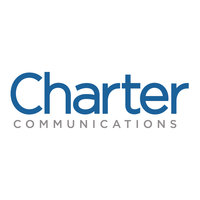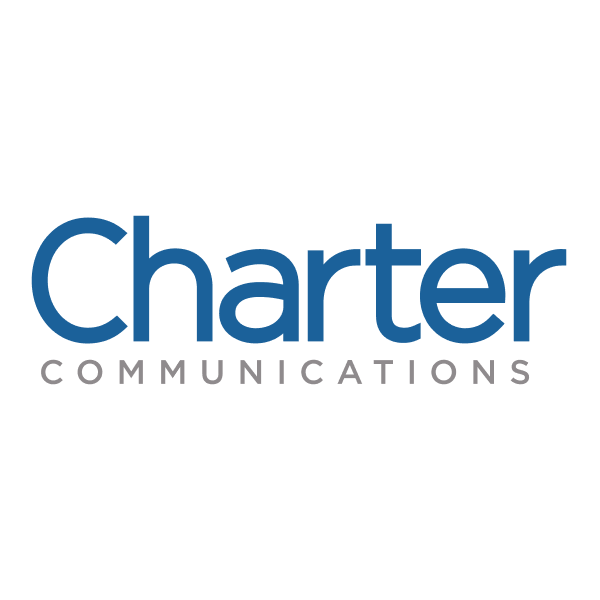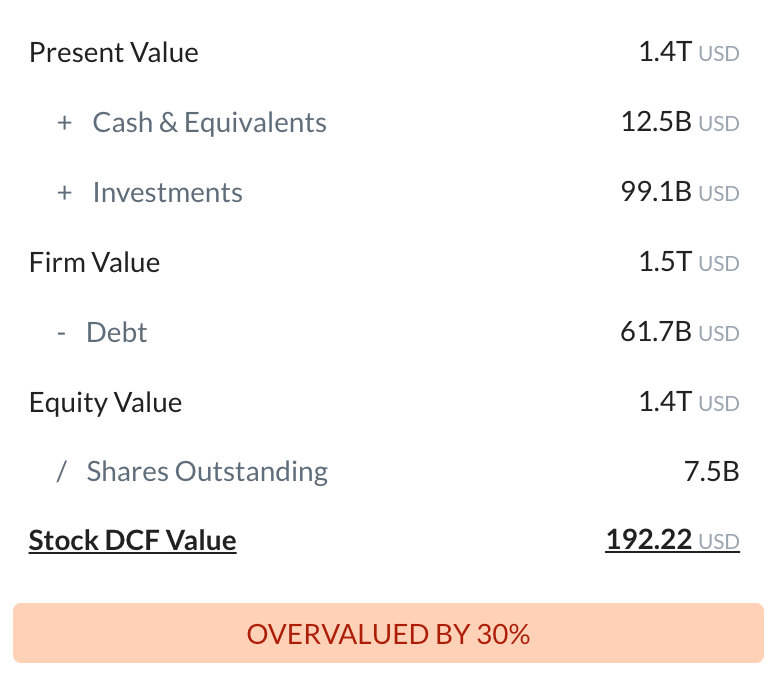
Charter Communications Inc
NASDAQ:CHTR


Utilize notes to systematically review your investment decisions. By reflecting on past outcomes, you can discern effective strategies and identify those that underperformed. This continuous feedback loop enables you to adapt and refine your approach, optimizing for future success.
Each note serves as a learning point, offering insights into your decision-making processes. Over time, you'll accumulate a personalized database of knowledge, enhancing your ability to make informed decisions quickly and effectively.
With a comprehensive record of your investment history at your fingertips, you can compare current opportunities against past experiences. This not only bolsters your confidence but also ensures that each decision is grounded in a well-documented rationale.
Do you really want to delete this note?
This action cannot be undone.

| 52 Week Range |
254.61
408.02
|
| Price Target |
|
We'll email you a reminder when the closing price reaches USD.
Choose the stock you wish to monitor with a price alert.
This alert will be permanently deleted.
 Charter Communications Inc
Charter Communications Inc
Intrinsic Value
The intrinsic value of one
 CHTR
stock under the Base Case scenario is
410.69
USD.
Compared to the current market price of 388.27 USD,
Charter Communications Inc
is
Undervalued by 5%.
CHTR
stock under the Base Case scenario is
410.69
USD.
Compared to the current market price of 388.27 USD,
Charter Communications Inc
is
Undervalued by 5%.
The Intrinsic Value is calculated as the average of DCF and Relative values:

Valuation Backtest
Charter Communications Inc

Uncover deeper insights with the Valuation Backtest. Learn how current stock valuations stack up against historical averages to gauge true investment potential.
Start backtest now and learn if your stock is truly undervalued or overvalued!
Stock is trading at its lowest valuation over the past 5 years.

To access the results of this valuation backtest, please register an account with us. Registration is quick and gives you instant access to insights on 3 stocks per week for free.
The backtest for  CHTR cannot be conducted due to limitations such as insufficient data or other constraints. Please select a different stock or adjust your settings.
CHTR cannot be conducted due to limitations such as insufficient data or other constraints. Please select a different stock or adjust your settings.
Fundamental Analysis
Select up to 3 indicators:
Select up to 3 indicators:
Months
Months
Months
Months
Select up to 2 periods:


Charter Communications Inc., a prominent player in the telecommunications industry, has established itself as a vital provider of high-speed internet, cable television, and digital phone services through its flagship brand, Spectrum. Founded in 1993 and headquartered in Stamford, Connecticut, Charter has grown significantly over the years, especially after acquiring Time Warner Cable and Bright House Networks in 2016. This strategic expansion not only bolstered its subscriber base but also positioned Charter as the second-largest cable operator in the United States. The company's commitment to delivering reliable, high-quality services is backed by a robust infrastructure and a focus on cust...
Charter Communications Inc., a prominent player in the telecommunications industry, has established itself as a vital provider of high-speed internet, cable television, and digital phone services through its flagship brand, Spectrum. Founded in 1993 and headquartered in Stamford, Connecticut, Charter has grown significantly over the years, especially after acquiring Time Warner Cable and Bright House Networks in 2016. This strategic expansion not only bolstered its subscriber base but also positioned Charter as the second-largest cable operator in the United States. The company's commitment to delivering reliable, high-quality services is backed by a robust infrastructure and a focus on customer satisfaction, which has helped it weather competitive pressures in an industry increasingly dominated by streaming services and wireless alternatives.
For investors, Charter Communications represents an attractive opportunity, as it continues to innovate and adapt in a rapidly evolving market. The company has embraced technology to enhance its offerings, launching initiatives such as cloud-based services and advanced Wi-Fi solutions to meet consumer demand for connectivity and digital entertainment. With a strong balance sheet and consistent revenue growth, Charter's focus on expanding its gigabit internet service and reducing churn rates indicates a solid long-term strategy. Additionally, its investments in original programming and partnerships with content providers position it well to compete not just as a cable provider but as a comprehensive media company. As digital consumption habits shift, Charter's ability to leverage its existing assets and subscriber relationships suggests a favorable outlook for sustained profitability and growth.
Charter Communications Inc., operating under the brand Spectrum, is a leading telecommunications and media company in the United States. Its core business segments can be categorized primarily into the following areas:
-
Cable Services:
- Video Services: Charter offers a robust selection of cable television services, including a variety of channels and on-demand content, as well as its Spectrum TV app which allows customers to stream content on various devices.
- High-Speed Internet: This segment is a significant revenue driver for Charter, providing broadband internet access to residential and business customers. They focus on delivering high-speed internet with no data caps, further bolstering their competitive position in the market.
- Voice Services: Spectrum also offers digital phone services, which include traditional telephone services, features like voicemail, and international calling options.
-
Business Services:
- Charter provides dedicated internet, telephone, and video services targeted at small to medium-sized businesses (SMBs) and enterprise customers. This segment emphasizes tailored solutions that meet the connectivity and communication needs of business clients, including managed services and cloud solutions.
-
Advertising Sales:
- Charter generates revenue from advertising through its cable television platforms. This involves selling ad space on its channels and utilizing audience data to optimize ad placements, appealing to businesses looking to reach specific audiences.
-
Content Distribution:
- Though primarily a provider of telecommunications services, Charter also engages in content distribution. They partner with various content providers and networks to offer a wide range of programming to their subscribers, working to secure favorable licensing agreements and ensure a diverse content library.
-
Mobile Services:
- Charter has expanded into mobile services through Spectrum Mobile, which offers wireless plans that leverage Verizon’s cellular network. This segment is aimed at capitalizing on the increasing convergence of mobile and broadband services.
These core segments help Charter Communications diversify its service offerings and drive growth, while also enabling it to respond effectively to competitive pressures in the telecommunications and entertainment industries.
Charter Communications, operating under the brand name Spectrum, has several unique competitive advantages over its rivals in the telecommunications and cable industry:
-
Broad Spectrum of Services: Charter offers a comprehensive suite of services including cable TV, internet, and phone services. This bundling of services allows for cross-selling opportunities and increased customer loyalty.
-
Large Infrastructure: Charter has invested heavily in its network infrastructure, giving it the ability to provide high-speed internet and a reliable cable service across a wide geographic area. This is particularly advantageous in rural and underserved regions where competitors may not have a robust presence.
-
No Contracts: Unlike many competitors that lock customers into long-term contracts, Charter offers no-contract options, which can attract customers who value flexibility and dislike penalties for early termination.
-
Focus on Data-Driven Improvements: Charter utilizes advanced analytics and data-driven strategies to enhance customer satisfaction, optimize service delivery, and minimize churn. This analytical approach helps in identifying and addressing customer pain points quickly.
-
Strong Brand Recognition: The Spectrum brand is known for providing a wide range of services and a commitment to no hidden fees and clear pricing. Strong brand recognition can lead to consumer trust and preference, which are important in a highly competitive market.
-
Recent Acquisitions and Expanded Market Reach: The acquisition of Time Warner Cable and Bright House Networks expanded Charter’s reach into new markets and bolstered its customer base significantly, providing economies of scale.
-
Investment in Technology: Charter has been investing heavily in technology improvements, including the rollout of DOCSIS 3.1 technology, which enhances its broadband speeds and efficiency, keeping it competitive in the fast-evolving tech landscape.
-
Strong Customer Support: Charter has focused on improving customer service and support, which can reduce churn and increase customer satisfaction. This service quality can differentiate it from competitors that may not prioritize customer service.
-
Diverse Content Partnerships: Charter has formed various partnerships with content providers, allowing it to offer extensive on-demand and live streaming options that appeal to a wide range of viewers, keeping it competitive against streaming-only options.
These competitive advantages position Charter Communications favorably in the telecommunications market, allowing it to compete effectively against both traditional cable companies and emerging streaming services.
Charter Communications Inc., like many companies in the telecommunications and cable industry, faces several risks and challenges in the near future. Here are some key factors to consider:
-
Competition: The telecommunications industry is highly competitive, with numerous players including traditional cable companies, satellite providers, and new entrants like streaming services (e.g., Netflix, Hulu) and internet-based telecommunications services (VoIP). Competing for market share with these alternatives can lead to pricing pressure and reduced subscriber growth.
-
Technological Changes: Rapid advancements in technology can pose a threat to traditional cable services. The shift towards streaming services and on-demand content requires Charter to continually innovate and possibly shift its business model to stay relevant.
-
Regulatory Challenges: Charter operates in a heavily regulated industry. Changes in regulations at the federal, state, or local levels could impact operations, investment strategies, pricing, and overall service offerings. Policies regarding net neutrality or telecommunications mergers could particularly influence the business environment.
-
Customer Retention and Churn: As consumers increasingly opt for bundled services or switch to alternative platforms, retaining existing customers becomes challenging. High churn rates can affect revenue stability, necessitating effective customer service and retention strategies.
-
Infrastructure and Capital Expenditures: Significant investments are required for maintaining and upgrading infrastructure to offer high-speed internet and modern services. Rising capital costs can strain financial resources, impacting profitability and the ability to invest in new technologies.
-
Economic Conditions: Economic downturns or changes in consumer spending habits can influence demand for Charter’s services. Cable and internet can be seen as discretionary spending, and price sensitivity can vary with economic conditions.
-
Cybersecurity Risks: As with any technology-driven company, Charter faces threats related to cybersecurity. Data breaches or service outages due to cyberattacks may undermine customer trust and result in regulatory penalties or financial losses.
-
Content Costs: For cable operators, the cost of acquiring and licensing content is a significant expense. Escalating costs for popular content can pressure margins and compel Charter to adjust pricing structures or reevaluate its offerings.
-
Market Saturation: The U.S. market for broadband and cable services is approaching saturation. Growth is likely to be modest, meaning Charter may need to explore new markets or service innovations to sustain revenue growth.
-
Shift to Remote Work: As remote work becomes more of a norm, businesses and households are reevaluating their internet needs. This shift may lead to changes in service demands and customer expectations, requiring Charter to adapt its offerings.
In summary, while Charter Communications has a solid position in the market, these risks and challenges necessitate strategic planning, innovation, and proactive risk management to ensure ongoing competitiveness and growth.
Revenue & Expenses Breakdown
Charter Communications Inc

Balance Sheet Decomposition
Charter Communications Inc

| Current Assets | 4.5B |
| Cash & Short-Term Investments | 721m |
| Receivables | 3.1B |
| Other Current Assets | 704m |
| Non-Current Assets | 144.9B |
| PP&E | 41.8B |
| Intangibles | 98.3B |
| Other Non-Current Assets | 4.8B |
| Current Liabilities | 13.2B |
| Accounts Payable | 855m |
| Accrued Liabilities | 10B |
| Other Current Liabilities | 2.3B |
| Non-Current Liabilities | 122.1B |
| Long-Term Debt | 94.5B |
| Other Non-Current Liabilities | 27.6B |
Earnings Waterfall
Charter Communications Inc

|
Revenue
|
54.9B
USD
|
|
Cost of Revenue
|
-29.5B
USD
|
|
Gross Profit
|
25.4B
USD
|
|
Operating Expenses
|
-12.4B
USD
|
|
Operating Income
|
13B
USD
|
|
Other Expenses
|
-8.3B
USD
|
|
Net Income
|
4.7B
USD
|
Free Cash Flow Analysis
Charter Communications Inc

| USD | |
| Free Cash Flow | USD |
In the third quarter, Charter Communications achieved a 1.6% revenue growth driven by a robust 18% increase in advertising revenue, tempered by shifts in political markets. Although they faced a loss of 110,000 Internet customers, mobile lines surged by 545,000. Capital expenditures were reduced by $400 million year-over-year to $2.6 billion, with expectations for 2024 CapEx now at $11.5 billion, down from $12 billion. Adjusted EBITDA grew 3.6%, signaling operational strength. The company emphasizes its focus on enhancing customer service and bundled offerings, anticipating these changes will bolster margins and customer retention moving forward.
What is Earnings Call?
CHTR Profitability Score
Profitability Due Diligence

Charter Communications Inc's profitability score is 63/100. The higher the profitability score, the more profitable the company is.

Score
Charter Communications Inc's profitability score is 63/100. The higher the profitability score, the more profitable the company is.
CHTR Solvency Score
Solvency Due Diligence

Charter Communications Inc's solvency score is 15/100. The higher the solvency score, the more solvent the company is.

Score
Charter Communications Inc's solvency score is 15/100. The higher the solvency score, the more solvent the company is.
Wall St
Price Targets
CHTR Price Targets Summary
Charter Communications Inc

According to Wall Street analysts, the average 1-year price target for
 CHTR
is 409.1 USD
with a low forecast of 232.3 USD and a high forecast of 693 USD.
CHTR
is 409.1 USD
with a low forecast of 232.3 USD and a high forecast of 693 USD.
Dividends

Current shareholder yield for  CHTR is
.
CHTR is
.
Shareholder yield represents the total return a company provides to its shareholders, calculated as the sum of dividend yield, buyback yield, and debt paydown yield. What is shareholder yield?

Ownership
CHTR Insider Trading
Buy and sell transactions by insiders

| Period | Sold | Bought | Net |
|---|---|---|---|
| 3 Months |
|
|
|
| 6 Months |
|
|
|
| 9 Months |
|
|
|
| 12 Months |
|
|
|
Profile

 Charter Communications Inc
Charter Communications Inc
Country
Industry
Market Cap
Dividend Yield
Description
Charter Communications, Inc. engages in the provision of broadband communications services. The company is headquartered in Stamford, Connecticut and currently employs 93,700 full-time employees. The company went IPO on 2009-12-02. Charter is a broadband connectivity company and cable operator serving approximately 32 million customers in 41 states through its Spectrum brand. The firm offers a range of residential and business services, including Spectrum Internet, television, mobile and voice. Spectrum Business offers Internet, voice, and video services to small and midsize business (SMB) through its fiber coaxial network. Spectrum Enterprise offers communications products and managed service solutions to larger businesses and government entities. The Spectrum Enterprise product portfolio includes Internet access; wide area network (WAN) solutions, including ethernet; software-defined WAN and cloud connectivity services. Spectrum Reach delivers advertising and production for the media landscape. Charter also distributes news coverage, sports, and original programming to its customers through Spectrum Networks and Spectrum Originals.
Contact
IPO
Employees
Officers
The intrinsic value of one
 CHTR
stock under the Base Case scenario is
410.69
USD.
CHTR
stock under the Base Case scenario is
410.69
USD.
Compared to the current market price of 388.27 USD,
 Charter Communications Inc
is
Undervalued by 5%.
Charter Communications Inc
is
Undervalued by 5%.







 You don't have any saved screeners yet
You don't have any saved screeners yet
